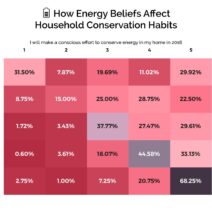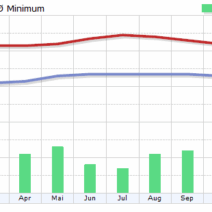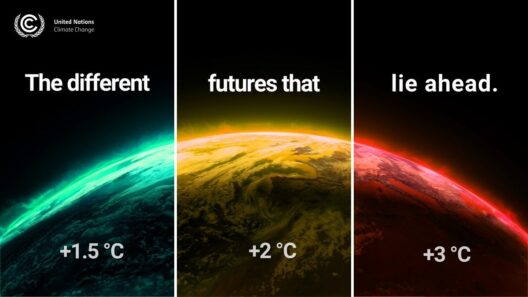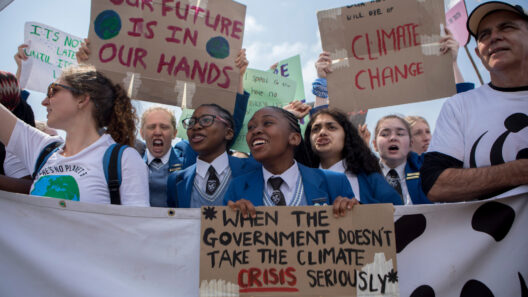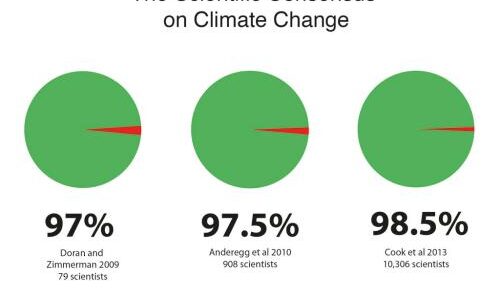The phenomenon of hurricanes has long captivated the human imagination, evoking both awe and dread. Their destructive potential is a stark reminder of nature’s fury, capable of wreaking havoc on communities in mere moments. However, what many fail to recognize is how climate change is intricately entwined with the escalating intensity of these storms. The backdrop of rising temperatures, shifting ocean currents, and increased atmospheric moisture creates a perfect storm, quite literally.
To comprehend the connection between climate change and hurricane intensity, it is essential to first understand the mechanics of how hurricanes form. These colossal storm systems are fueled by warm ocean waters. When the ocean surface temperature exceeds 80°F, conditions become conducive for storm formation. As the water evaporates, it releases latent heat into the atmosphere, further fueling the cyclone. Climate change has steadily increased global ocean temperatures, providing the ideal breeding ground for more robust hurricanes.
Moreover, the concentration of greenhouse gases in the atmosphere enhances the greenhouse effect, contributing to higher overall global temperatures. This warming does not only heat the oceans, but it also absorbs more moisture, intensifying the storms. Studies indicate that for every 1.8°F increase in sea surface temperature, hurricane rainfall can increase by approximately 7%. This is a staggering statistic, implying that as temperatures rise, hurricanes do not just grow stronger; they also become wetter.
Additionally, the shifting patterns of atmospheric circulation play a crucial role in modifying the trajectories and behaviors of storms. Climate change influences these patterns, leading to alterations in steering currents that guide hurricane paths. As a result, storms may linger longer over coastal areas or travel further inland than in previous decades. The implications of this are profound: prolonged exposure to hurricane conditions exacerbates destruction, leading to prolonged devastation of communities.
Research has shown that the frequency of high-intensity storms—Category 4 and 5 hurricanes—has increased since the 1980s. Iconic hurricanes such as Hurricane Harvey and Hurricane Maria exemplify this trend. Harvey inundated Houston with unprecedented rainfall, causing catastrophic flooding that displaced thousands. Maria devastated Puerto Rico, inflicting widespread damage and leading to a humanitarian crisis. These storms serve as harrowing reminders of an alarming trend: climate change is not a distant concern; it is an immediate, tangible reality.
The economic ramifications of intensified hurricanes are equally alarming. The costs associated with recovery and rebuilding escalate with each storm, burdening taxpayers and municipalities. In recent years, the financial toll of hurricanes has crossed into the hundreds of billions of dollars. Insurance companies struggle to keep pace, leading to rising premiums that place additional stress on individuals and communities already reeling from disaster.
Transitioning from a global perspective, the local implications of hurricanes are both drastic and multifaceted. Coastal communities face existential threats, with rising sea levels exacerbating storm surges and increasing the vulnerability of infrastructures. Properties that were once considered secure now find themselves precariously close to the brink. This shifts the status quo of communities, leading to discussions surrounding relocation, disaster preparedness, and long-term resilience strategies.
The psychological impact of hurricane threats cannot be overlooked. Communities taut with anxiety about future storms see their mental health challenged, as the specter of disaster looms ever closer. Fear of storm impacts can lead to heightened stress levels, impacting everything from familial relationships to local economies. As hurricanes increase in frequency and severity, the overarching mental toll on these communities becomes an invisible yet pressing concern.
Unfortunately, debate persists surrounding the extent of climate change’s influence on hurricane intensity. Critics often argue that natural variability plays a significant role, downplaying the evidence linking climate change to hurricane behavior. However, resisting the compelling scientific consensus diminishes the opportunity for meaningful dialogue regarding mitigation strategies. It is essential to acknowledge the overwhelming data supporting the notion that climate change is exacerbating storm phenomena.
In response to the gremlin of climate change, some regions embrace adaptive strategies aimed at enhancing resilience. Engineering solutions, such as building sea walls and retrofitting infrastructure, seek to mitigate storm impacts. Yet, engineering alone cannot suffice; community engagement and education are paramount. Residents must understand the risks they face and the steps they can take to protect both themselves and their homes.
Moreover, proactive policies at governmental levels are imperative. Establishing regulations that limit greenhouse gas emissions, promoting renewable energy sources, and investing in climate-smart infrastructure are essential steps. These measures not only contribute to alleviating climate change but also enhance the adaptive capacity of communities to withstand extreme weather events.
Ultimately, confronting hurricane havoc requires a multifaceted approach that intertwines scientific understanding, community enhancement, and robust policy-making. As climate change continues to cast a long shadow over our environmental landscape, recognizing its role in magnifying hurricanes is not merely an academic exercise; it is a moral imperative. Empowering individuals, fostering collaboration, and advocating for action can carve a path toward safer, more resilient futures in the face of increasingly treacherous storms.
